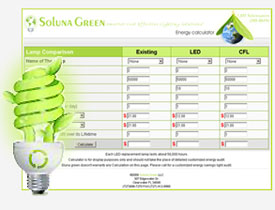Why LED Lights?

Why LED Lights?
Lighting applications that use light-emitting diodes (LEDs), organic light-emitting diodes (OLEDs), or light-emitting polymers are commonly referred to as solid-state lighting. Unlike incandescent or fluorescent lamps, which create light with filaments and gases encased in a glass bulb, solid-state lighting consists of semiconductors that convert electricity into light. LEDs have been around for more than 40 years, but until recently, were used only in electronic devices as indicator lamps.
Technological developments in the last two decades have allowed LEDs to be used in signal devices, like traffic lights and exit signs, and in some limited illumination applications, such as flashlights. However, cutting-edge research now shows a bright future for solid-state lighting as the next generation of light sources for general illumination, from homes to commercial applications.
New uses for LEDs in the General illumination market include small-area lighting, such as task and under-shelf fixtures, decorative lighting, pathway and step marking, indoor down lights, and outdoor parking lot and area lighting.
Solid-state lighting promises to change the way we light the world.









